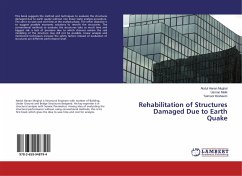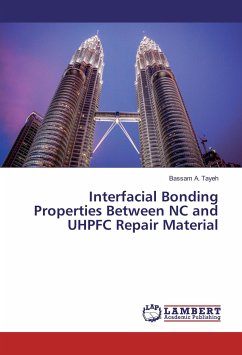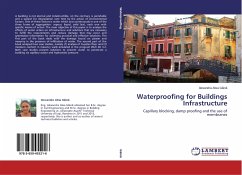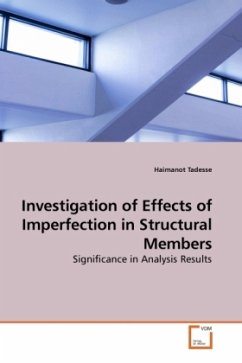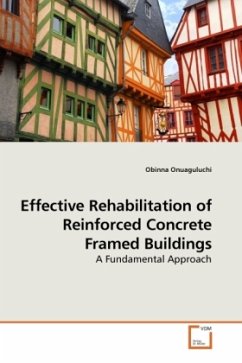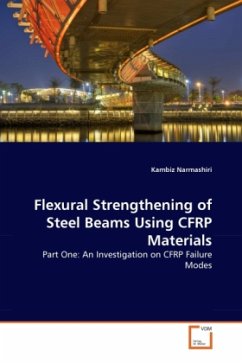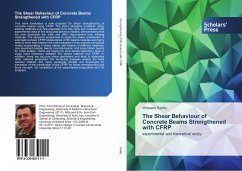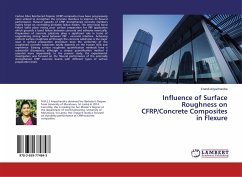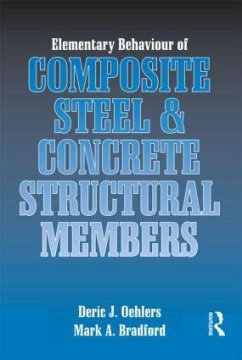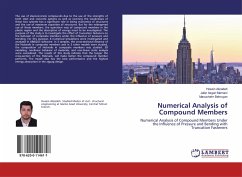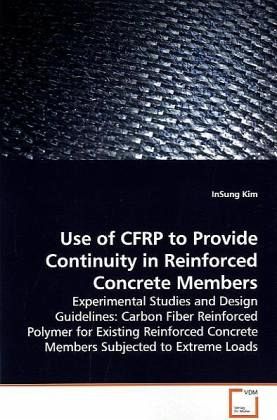
Use of CFRP to Provide Continuity in Reinforced Concrete Members
Experimental Studies and Design Guidelines: Carbon Fiber Reinforced Polymer for Existing Reinforced Concrete Members Subjected to Extreme Loads
Versandkostenfrei!
Versandfertig in 6-10 Tagen
52,99 €
inkl. MwSt.

PAYBACK Punkte
26 °P sammeln!
A special problem in many reinforced concrete (RC) structures built in the 1970 s and earlier is the lack of continuity between elements. Continuity is a characteristic of structures essential to preventing collapse. Therefore, in extreme loading conditions such as loss of a column support due to terrorist attack or if earthquake or other extreme actions occur, the structures could be vulnerable to collapse. The study reported here focused on two structural discontinuities in existing RC structures, discontinuity in bottom reinforcement in beams (horizontal discontinuity) and poorly detailed l...
A special problem in many reinforced concrete (RC)
structures built in the 1970 s and earlier is the
lack of continuity between elements. Continuity is a
characteristic of structures essential to preventing
collapse. Therefore, in extreme loading conditions
such as loss of a column support due to terrorist
attack or if earthquake or other extreme actions
occur, the structures could be vulnerable to
collapse. The study reported here focused on two
structural discontinuities in existing RC
structures, discontinuity in bottom reinforcement in
beams (horizontal discontinuity) and poorly detailed
lap splices in columns (vertical discontinuity). The
objective of this study was to develop
rehabilitation methods using Carbon Fiber Reinforced
Polymer (CFRP) to provide continuity of
reinforcement. Two separate experimental studies
were conducted. The test results indicated that
continuity could be provided through the CFRP
rehabilitation. Based on the test results, design
guidelines for the CFRP rehabilitation were
proposed. The study should be useful to
professionals in Structural Engineering field who
are interested in rehabilitation of RC structures.
structures built in the 1970 s and earlier is the
lack of continuity between elements. Continuity is a
characteristic of structures essential to preventing
collapse. Therefore, in extreme loading conditions
such as loss of a column support due to terrorist
attack or if earthquake or other extreme actions
occur, the structures could be vulnerable to
collapse. The study reported here focused on two
structural discontinuities in existing RC
structures, discontinuity in bottom reinforcement in
beams (horizontal discontinuity) and poorly detailed
lap splices in columns (vertical discontinuity). The
objective of this study was to develop
rehabilitation methods using Carbon Fiber Reinforced
Polymer (CFRP) to provide continuity of
reinforcement. Two separate experimental studies
were conducted. The test results indicated that
continuity could be provided through the CFRP
rehabilitation. Based on the test results, design
guidelines for the CFRP rehabilitation were
proposed. The study should be useful to
professionals in Structural Engineering field who
are interested in rehabilitation of RC structures.



